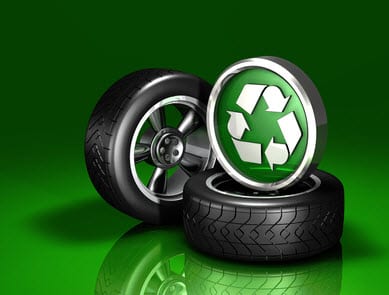
Worst Industries for Landfills, and What They’re Doing About It
June 15, 2013Earth’s skyrocketing levels of waste are contributing to the planet’s proliferating landfills. Waste material in the form of rubber, Styrofoam and plastics are three of the worst culprits of society’s growing landfill dilemma. The good news is that the industries of these products have become aware of the environmental danger their products pose and are taking steps to become more sustainable.
Rubber Tires
It’s a sad fact that the most common types of car tires do not decompose; they last nearly forever. Given that there are countless landfills brimming with old tires around the country and the world, this is quite alarming. However, the tide is turning. Forty-eight states now require tire companies to charge a tire disposal fee for each tire they sell, TireBuyer.com notes. Some companies are also now featuring more eco-friendly options. Michelin, Goodyear and Kumho tires at TireBuyer are all either incorporating green technology into its tires or designing them for increased mpg.
Computers and Peripherals
As for computers, the Dell company and many others now offer a free send-back plan for used computers. It’s called Dell Reconnect, and users drop off old computers at Goodwill stores. Hewlett-Packard offers a similar program for its printers. Plans like these can go a long way in helping to keep the hazardous components in computer equipment out of landfills and out of the earth’s soil and environment.
Styrofoam and Plastics
The Dow company, manufacturer of Styrofoam, is now employing innovative new ways to handle the scraps of its products in a much more earth-friendly manner. Consumers who have Styrofoam at home that they don’t know what to do with can take advantage of a new mail back initiative offered by The Alliance of Foam Packaging Recyclers, according to Green Living Tips. You’ll have to foot the postage, but the group will take care of your unwanted Styrofoam in an eco-friendly way.
Styrofoam at home that they don’t know what to do with can take advantage of a new mail back initiative offered by The Alliance of Foam Packaging Recyclers, according to Green Living Tips. You’ll have to foot the postage, but the group will take care of your unwanted Styrofoam in an eco-friendly way.
Plastics
The recycling rate for different types of plastics can vary greatly, and the overall plastic recycling rate in 2010 was only about eight percent, according to the EPA. Still, that’s a whopping 2.4 million tons. Recycling rates for certain types of plastics are higher, such as HDPE plastics, which are used in bottles; in 2010, 28 percent were recycled.
Source Reduction
The most significant way to reduce waste is by source reduction, which is, simply put, cutting down on materials that contribute to waste. Source reduction in the plastic bottle industry happens when homes and businesses install water filtration systems and eliminate the need for bottled water. Manufacturers that use Styrofoam for packaging look for materials that offer just as much insulation but are made from biodegradable substances. Unfortunately, in the rubber industry, not much can be done to reduce that source of waste. Unless we reduce the number of cars on the road, we’ll never be able to reduce the numbers of tires. The EPA reports that civil engineering efforts have created uses for ground rubber, which takes tires, chops them up and folds them into pavement used for roads. They’ve been used as sound barriers between busy highways and populated neighborhoods, as a softer ground covering for playgrounds and railroad ties.
For more information on recycling efforts, visit the EPA website at www.epa.gov/osw/conserve.



 With over 15 years of reporting hydrogen news, we are your premier source for the latest updates and insights in hydrogen and renewable energy.
With over 15 years of reporting hydrogen news, we are your premier source for the latest updates and insights in hydrogen and renewable energy.